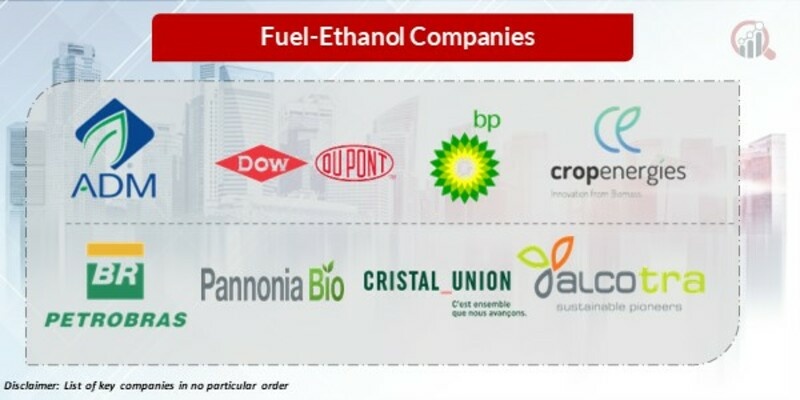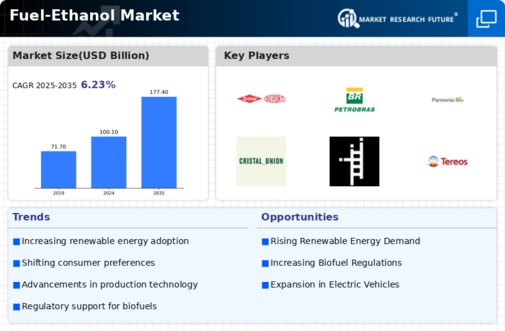Top Industry Leaders in the Fuel Ethanol Market

The fuel-ethanol market, fueled by environmental concerns and energy security goals, is experiencing a dynamic shift. Let's delve into the competitive landscape, exploring key factors influencing market share, prominent strategies adopted by players, industry news, and recent developments shaping the future of fuel-ethanol.
Market Share Determinants: A Complex Mosaic
Several factors influence market share in this intricate landscape:
-
Feedstock: Corn remains the dominant feedstock, but cellulosic ethanol derived from biomass like wood and agricultural waste is gaining traction, driven by sustainability concerns and technological advancements. -
Government Policies: Government mandates and subsidies play a crucial role in ethanol blending rates, directly impacting market demand. Recent policy changes in the US, such as the proposed RFS expansion, are closely monitored for their potential impact. -
Technological Innovation: Advancements in fermentation technologies, yield improvement, and cellulosic ethanol production are crucial for cost reduction and market competitiveness. -
Regional Variations: The market dynamics differ significantly across regions. North America remains the largest consumer, with Europe and Asia Pacific showcasing significant growth potential due to rising environmental concerns and energy security challenges. -
Player Strategies: The diverse range of players, from established energy giants to independent producers, employ unique strategies to gain an edge. Vertical integration, partnerships, and geographic expansion are common tactics.
Competitive Strategies: Diversifying to Win
Players in the fuel-ethanol market are adopting various strategies to secure market share:
-
Diversification of Feedstock: Investing in cellulosic ethanol production or exploring alternative feedstocks like sugarcane and jatropha reduces reliance on corn and mitigates feedstock price volatility. -
Technological Partnerships: Collaborating with research institutions and technology providers fosters innovation and accelerates the development of cost-effective production processes. -
Focus on Sustainability: Highlighting the environmental benefits of ethanol, such as its role in reducing greenhouse gas emissions, resonates with consumers and policymakers alike. -
Geographical Expansion: Entering new markets or expanding existing footprints in high-growth regions like Asia Pacific fuels market share growth. -
Cost Optimization: Implementing operational efficiencies and optimizing production processes to reduce costs and improve profitability is key to staying competitive.
Key Players:
- Archer Daniels Midland Company (US)
- DowDuPont (US)
- BP PLC (UK)
- Cropenergies AG (Germany)
- Petrobras (Brazil)
- Pannonia Bio (Hungary)
- Cristal Union (France)
- Alcogroup (Belgrade)
- Tereos (France)
- Valero Marketing and Supply Company (US)
- BlueFire Renewables Inc (US)
Recent Developments:
August 2023: ADM announces plans to invest in cellulosic ethanol production facilities in North America and Europe.
September 2023: The International Energy Agency releases a report predicting that ethanol blending rates will remain stable in the near future.
October 2023: The European Commission proposes a revised Renewable Energy Directive that includes ambitious targets for the use of renewable fuels in transportation.
November 2023: Raízen, a leading Brazilian ethanol producer, expands its operations into the US market through a strategic acquisition.
December 2023: A consortium of leading ethanol producers and researchers announces a breakthrough in enzyme technology for cellulosic ethanol production, potentially reducing costs and boosting market competitiveness.









